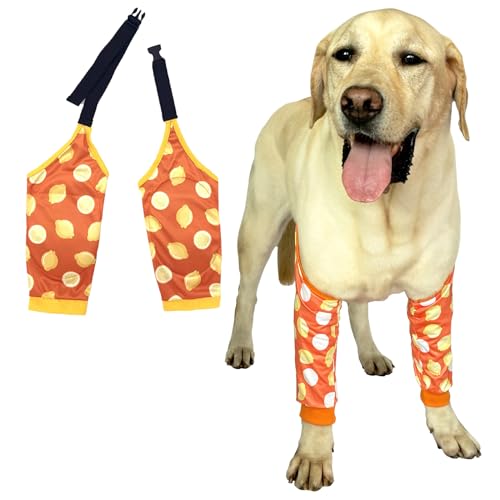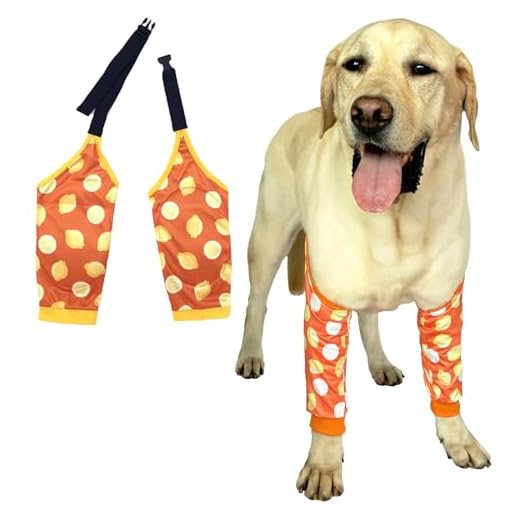




Applying a nourishing balm specifically designed for paws can significantly improve the comfort of your furry companion. Look for products containing natural ingredients such as shea butter or coconut oil, which provide moisture and create a protective barrier against further irritation. These balms not only soothe the affected areas but also promote healing, making them an excellent choice for rough patches.
Regularly massaging the affected spots with a gentle touch helps to increase blood circulation, encouraging better skin health. Consistency is key; aim for a daily routine to see noticeable improvements over time. You might find that your pet enjoys this little pampering session as much as you enjoy caring for them!
If you prefer a DIY approach, mixing olive oil with a few drops of lavender essential oil creates a soothing treatment that can be applied to your pet’s rough areas. The calming scent of lavender also helps to relax your companion, making this a beneficial ritual for both of you.
Keep an eye on your pet’s environment as well. If the surfaces they frequent are particularly harsh, consider using protective booties during walks. This simple addition can prevent further damage and allow the skin to heal properly.
Recommendations for Treating Paw Pad Bumps
For relief from those rough patches on your pet’s paws, consider using a moisturising balm specifically designed for canine skin. Look for products that include natural ingredients such as shea butter, coconut oil, and vitamin E. These components help to hydrate and soften the skin, providing comfort.
Application Tips
- Clean the affected area gently with warm water and a soft cloth.
- Apply a small amount of balm directly to the dry skin.
- Massage the product in gently to ensure absorption.
- Allow it to soak in for a few minutes before letting your furry friend walk on hard surfaces.
Additional Care Options
If you’re looking for alternatives, consider using natural oils such as olive oil or jojoba oil. These can serve as a temporary moisturiser. Always test a small area first to ensure there’s no adverse reaction. Regularly check the paws for any signs of irritation or infection, and consult your vet if you notice any changes.
- Keep the paw area trimmed and free from debris.
- Limit exposure to harsh surfaces during walks.
- Ensure proper hydration, as it contributes to skin health.
Understanding Dog Calluses and Their Causes
To tackle those tough patches on your furry friend, it’s key to first comprehend what they are and why they appear. Calluses generally form as a protective response to repeated friction or pressure. In my experience, I’ve noticed these areas often develop on the elbows and hocks, particularly in larger breeds or those that spend substantial time lying on hard surfaces.
Common Triggers
Several factors contribute to the formation of these skin thickening. Regular activities like lying on concrete or rough terrain can accelerate the process. Additionally, age plays a role; older canines may experience more pronounced calluses due to reduced skin elasticity. Health conditions such as obesity can also heighten pressure on specific body parts, leading to increased likelihood of developing these protective spots.
Prevention Strategies
Maintaining a comfortable environment is crucial. Providing soft bedding and avoiding prolonged exposure to hard surfaces can significantly reduce the risk. Regular grooming helps keep the skin supple, reducing friction and irritation. Watch for any signs of discomfort, as these areas can become inflamed or infected if not monitored closely.
| Trigger | Details |
|---|---|
| Hard Surfaces | Prolonged lying on concrete or gravel can lead to thickened skin. |
| Age | Older pets are more prone to developing these protective patches. |
| Obesity | Excess weight increases pressure on joints, leading to more pronounced areas. |
| Friction | Activities that involve rubbing against surfaces can accelerate callus formation. |
Topical Treatments for Canine Calluses
For alleviating discomfort from tough skin patches, a few topical remedies have proven effective over time. One of my go-to options is a high-quality dog paw balm. These balms, often made with natural ingredients like beeswax and coconut oil, create a protective barrier while moisturising the area. I’ve seen noticeable improvement in my furry friend’s condition after consistent application.
Another option is to use vitamin E oil. Applying this oil directly to the rough areas can aid in softening and healing the skin. I remember the first time I used it; within a week, the calluses appeared less pronounced, and my pup seemed more comfortable while lounging around the house.
Shea butter is also a fantastic choice. It’s rich in fatty acids, providing deep hydration. I usually warm a small amount in my hands before massaging it into the affected spots. My companion really enjoys this routine, and it helps keep the skin supple.
For those seeking a more medicinal approach, hydrocortisone creams can be beneficial for inflamed areas. However, it’s wise to consult a veterinarian before trying any steroid-based treatment. Once, I made the mistake of using it without guidance, and it caused more irritation than relief.
Regular maintenance is key. Keeping the skin clean and dry can prevent further issues. I routinely check my furry mate’s paws after our walks, ensuring there’s no dirt or moisture trapped in those rough spots. A gentle scrub with a damp cloth can do wonders.
While topical treatments are effective, don’t forget about the importance of proper bedding. Soft surfaces can reduce pressure on these areas. I invested in a plush dog bed that cushions my mate’s joints and prevents the formation of new rough patches.
Experiment with these options to see which works best for your canine companion. Everyone’s experience is unique, and finding the right remedy may require some trial and error. Always observe the reactions closely and adjust your approach as needed.
Natural Remedies to Soothe Calloused Skin
For soothing rough patches on your pet’s skin, consider applying coconut oil. Its natural moisturising properties can help hydrate and soften the affected areas. A light massage of this oil can also promote blood circulation, enhancing skin health.
Another effective option is shea butter. This thick cream not only nourishes but also provides a protective barrier against irritants. Apply a small amount directly to the calloused area and gently rub it in. This can be particularly helpful during colder months when skin tends to dry out more rapidly.
Aloe Vera for Healing
Aloe vera gel is well-known for its healing capabilities. It can soothe irritation and promote skin regeneration. Simply cut a leaf and apply the fresh gel onto the rough skin. This remedy is especially useful if there are any signs of redness or inflammation.
Honey as a Natural Antiseptic
Honey has natural antiseptic properties that can aid in healing. Applying a thin layer can help keep the skin moist while preventing infections. Just be sure to monitor your furry friend, as they might be tempted to lick it off.
When considering your companion’s diet, make sure to provide the best dog food for anatolian shepherd, as a balanced diet can impact overall skin health. Regularly checking and treating any skin issues will keep your pet comfortable and happy.
Preventive Measures to Avoid Dog Calluses
Regularly examining your pet’s resting areas is key. Ensure that their bedding is soft and supportive. A good quality dog bed can significantly reduce pressure points. Memory foam beds are particularly beneficial, as they conform to your pet’s body shape.
Routine Care
- Check the skin for any signs of irritation or rough patches.
- Keep the fur trimmed in areas prone to callus formation to reduce friction.
- Regular grooming helps maintain skin health and can prevent calluses from developing.
Exercise Management
- Choose softer surfaces for walks, like grass or dirt trails, instead of concrete or asphalt.
- Limit high-impact activities that may increase pressure on joints and skin, especially in older pets.
- Encourage rest periods during playtime to alleviate constant pressure on certain body parts.
Consult your vet about dietary adjustments that can promote skin health. Omega fatty acids, found in fish oil, can improve skin elasticity and overall health. Keeping your pet hydrated is also essential–always have fresh water available.
When to Consult a Veterinarian for Dog Calluses
Observe for signs of discomfort or changes in behaviour. If your furry friend seems to be excessively licking or scratching the affected areas, it’s time to seek professional advice. A visit to the vet is warranted if the surface appears cracked, bleeding, or shows signs of infection such as swelling or discharge.
Signs Indicating Veterinary Attention
Pay attention to any unusual growths or changes in the texture of the skin around those hardened patches. If there’s a distinct foul smell, it may indicate an underlying issue. Persistent pain or limping should not be ignored; a thorough examination is necessary to rule out complications.
Recurring Problems
If these hardened areas keep coming back despite your efforts with treatments or preventative measures, consulting a vet is crucial. It may be an indication of a more serious condition that requires specialized care. Your veterinarian can provide tailored advice and possible treatments that go beyond home remedies.








